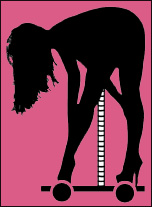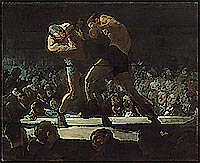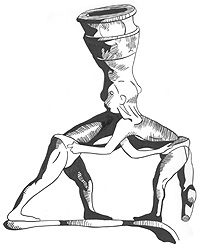For boxing at range few trainers coach the power pivot jab, where the boxer stands his ground, bracing with the rear foot and pivots with the lead foot under the jab.
When should this jab be used?
-When you have hurt a fighter as he moves forward.
-After you have scored a power right.
-After you have scored a hook, power right combo, as was scored on 1/14/18 in the UFC preliminary bout, against Matt Frivola pressuring in and Polo Reyes, the slightly taller, better boxer, standing his ground.
-As with this last example, the slightly taller man is well served by going to the power jab as he has superior chin access with both hands and is in danger of being clinched by the shorter forward-moving fighter. In this situation, when throwing a hook, or especially a second hook, may cause a clinch, the power jab uses the same pivot as the hook, so may be interchanged for the hook at any point when the opponent is falling forward or moving for the clinch while close and/or hurt.
How should this jab be fired?
-The pronated [palm down] power jab tends to pin the chin and should be used in concert with a rear hand hook or elbow or a straight rear hand to the solar plexus.
-The three quarter fist is ideal for turning the chin into your oncoming rear hand hook, cross, straight right or overhand right.
-The supinated up jab is good for damaging the eye orbit and or lifting the chin to be pinned by the rear hand with any punch from that side.
Integration
While shadow boxing, work on stepping back behind a blind jab and then walking your man into a straight rear hand or cross, then setting him up for a finishing shot with a power jab and slamming the rear hand home again.
This might also be used after a successful cut-off hook has been landed while moving back, either from a draw, fade or post, going to the straight right to stabilize or finish the target [and once he is frozen upright with the stabilizing right [maybe a palm to the shoulder or chest] or having failed to finish hi with the power right, stand him up and expose his chin with the power jab to deny the clinch and set him up for the second, finishing power right [essentially what Reyes did in the above-mentioned fight while standing his ground.]
Alternatively, imagine getting your man in trouble over the course of numerous exchanges and then coming in behind a rear hand feint, ripping the Philly hook, going to an angle, resetting, loading and feinting the rear hand, firing the power jab and then letting that rear hand go—having pre-targeted it with the feint.
What you are working on is developing a tactical sensitivity that is a combination of a time and measure rhythm sense and the tactile measuring lead hand jab and rear hand feint, in order to develop a sense for what punch should be thrown off that lead hand pivot, the Philly hook to the jaw for the KO, the shovel hook [countering after a rear hand from the opponent] to the body to drop his guard or the power jab to the chin or eye to set him up for a right hand and/or prevent the clinch.
Being a Bad Man in a Worse World
Fighting Smart: Boxing, Agonistics & Survival











